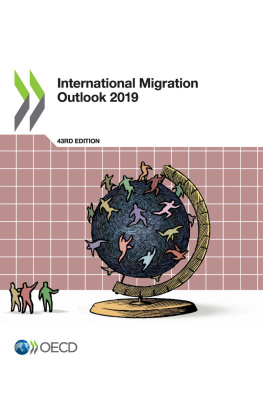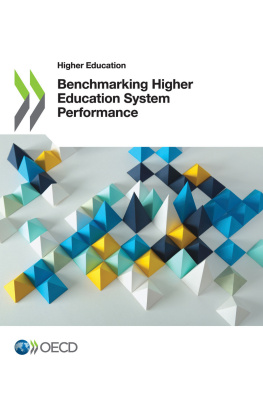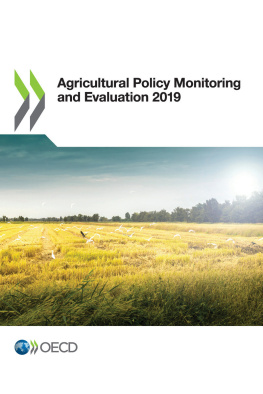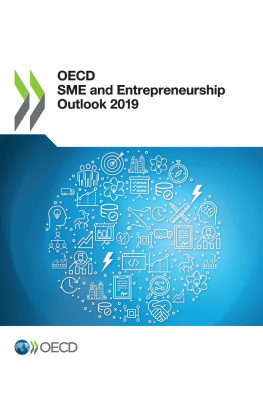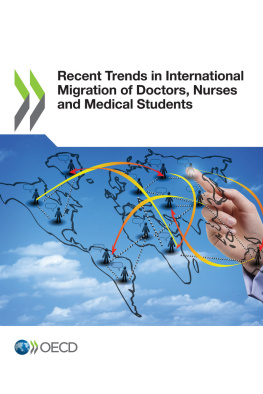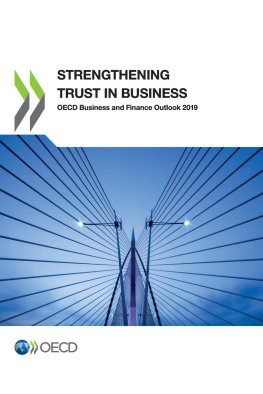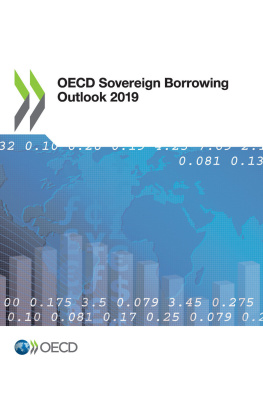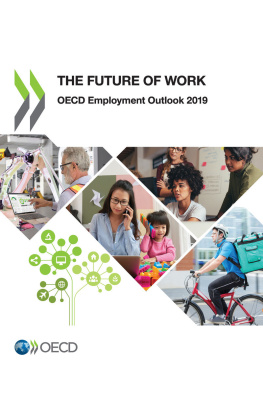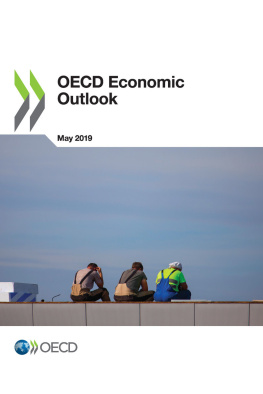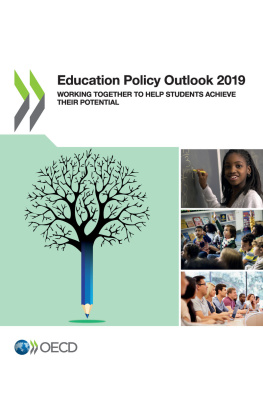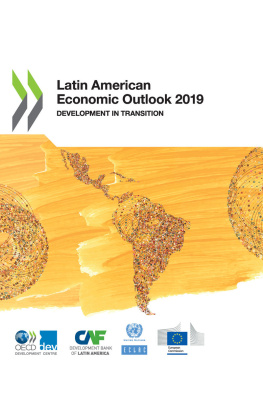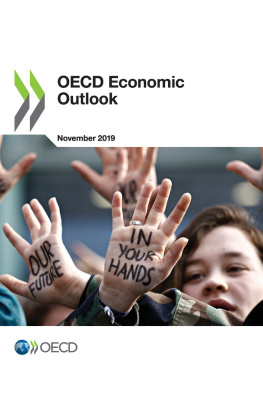OECD - International Migration Outlook 2019
Here you can read online OECD - International Migration Outlook 2019 full text of the book (entire story) in english for free. Download pdf and epub, get meaning, cover and reviews about this ebook. year: 2019, publisher: OECD Publishing, genre: Politics. Description of the work, (preface) as well as reviews are available. Best literature library LitArk.com created for fans of good reading and offers a wide selection of genres:
Romance novel
Science fiction
Adventure
Detective
Science
History
Home and family
Prose
Art
Politics
Computer
Non-fiction
Religion
Business
Children
Humor
Choose a favorite category and find really read worthwhile books. Enjoy immersion in the world of imagination, feel the emotions of the characters or learn something new for yourself, make an fascinating discovery.
International Migration Outlook 2019: summary, description and annotation
We offer to read an annotation, description, summary or preface (depends on what the author of the book "International Migration Outlook 2019" wrote himself). If you haven't found the necessary information about the book — write in the comments, we will try to find it.
OECD: author's other books
Who wrote International Migration Outlook 2019? Find out the surname, the name of the author of the book and a list of all author's works by series.
International Migration Outlook 2019 — read online for free the complete book (whole text) full work
Below is the text of the book, divided by pages. System saving the place of the last page read, allows you to conveniently read the book "International Migration Outlook 2019" online for free, without having to search again every time where you left off. Put a bookmark, and you can go to the page where you finished reading at any time.
Font size:
Interval:
Bookmark:
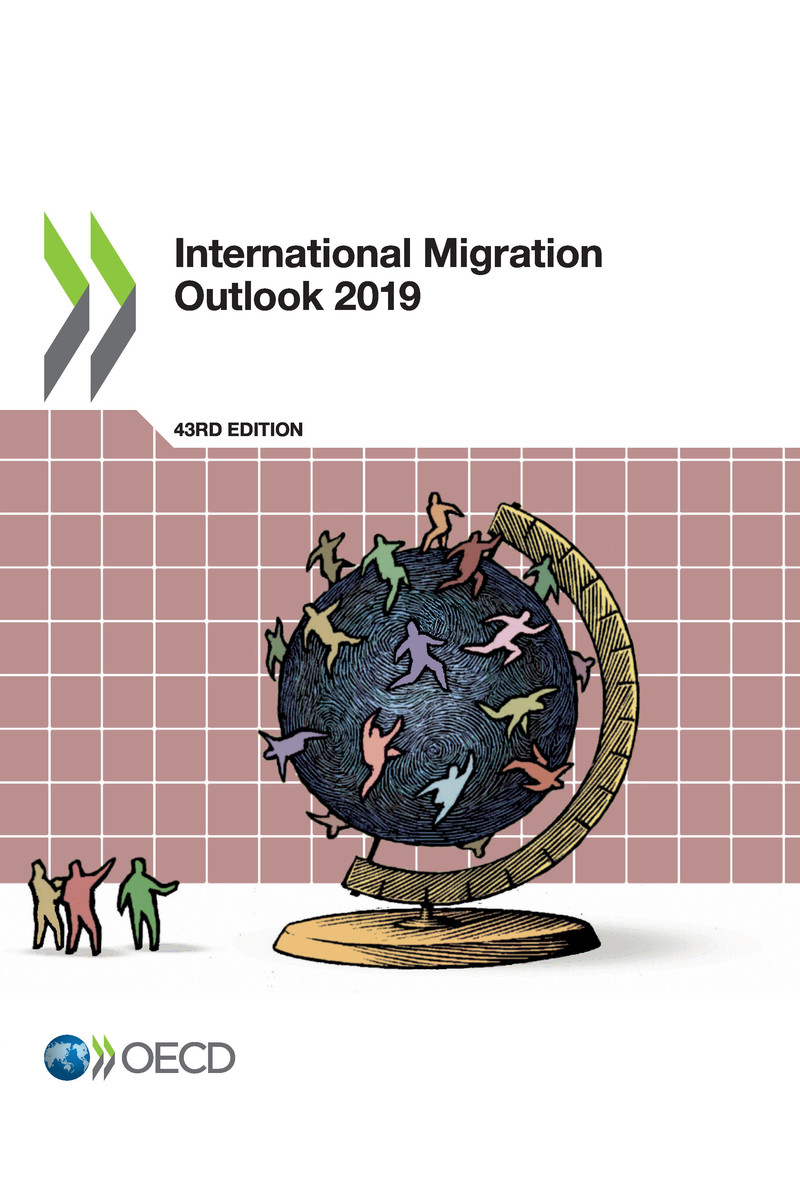
OECD (2019), International Migration Outlook 2019 , OECD Publishing, Paris, https://doi.org/10.1787/c3e35eec-en .
This publication constitutes the 43 rd report of the OECDs Continuous Reporting System on Migration. The report is divided into five chapters plus a statistical annex.
Chapter 1 provides a broad overview of recent trends in international migration flows and policies. Chapter 2 takes an in-depth look at the employment situation of immigrants and highlights major changes in policies that support the integration of immigrants and their children.
Chapter 3 examines the impact of temporary migration on the host-country labour market and provides the first estimation of the additional labour contributed in full-year equivalent by temporary migrants to the employed population in 20 OECD countries. The chapter covers all forms of temporary migration, such as temporary labour migrants, international students, participants in cultural exchange programmes, service providers, accompanying families of temporary labour migrants, free-movement migrants and cross-border workers. It demonstrates the need to pursue enhanced data collection efforts on temporary migration in order to build a complete picture of the impact of migration on host-country labour markets in OECD countries.
Chapter 4 investigates how migrants long-term integration outcomes are affected by delays in family reunification. The integration outcomes of both principal migrants and the spouses who reunify with them are considered. The chapter provides new empirical evidence for a range of OECD countries and discusses potential reasons why delays in family reunification influence integration outcomes such as wages, employment, and language proficiency. It also explores the effects of age at arrival on the integration outcomes of migrant children, and the role played by the presence of migrants parents. The key implications for policies regulating family reunification are discussed.
Chapter 5 presents succinct country-specific notes and statistics on developments in international migration movements and policies in OECD countries in recent years. Lastly, the statistical annex includes a broad selection of recent and historical statistics on immigrant flows; asylum requests; foreign and foreign-born populations; and naturalisations.
This years edition of the OECD International Migration Outlook is the collective work of the staff of the International Migration Division in the Directorate for Employment, Labour and Social Affairs. Chapters 1 and 5 contain contributions from John Salt (University College London). Chapter 3 was prepared by Ana Damas de Matos and Chapter 4 by Friedrich Poeschel. Jean-Christophe Dumont edited the report. Research assistance and statistical work were carried out by Vronique Gindrey and Philippe Herv. Editorial assistance was provided by Joanne Dundon and Anna Tarutina.
Migration touches upon the very notion of the nation state. Changes in legislation governing who can enter or stay legally in a host country, who can settle with his or her family, who can obtain citizenship or can vote, can all have an impact on social norms, values and institutions.
This explains why the management of migration flows and the integration of foreign-born people in OECD countries are among the most sensitive and complex policy issues we face. Migration policy decisions are often magnets for controversy and, at the same time, migration and integration generally rank high in the list of peoples concerns in opinion polls.
Yet migration is not a new phenomenon. People have always migrated in search of better lives elsewhere. And while migration flows are at record high levels, and many OECD countries have a sizeable share of their population born abroad, the public discourse in the press and social media is often dominated by partial or distorted views, with migrants used as a scapegoat for unrelated problems or fears. In many cases, migration tends to be reduced to humanitarian considerations, while illegal movements are confounded with lawful ones.
In a number of countries, a common public perception is that migration is uncontrolled and costly. Uncontrolled because borders are not perceived to be secure. Costly because immigrants are assumed to be taking jobs from native workers or claiming social benefits for themselves and/or their families. Numerous analyses, reviewed in Chapter 3 of this publication, clearly show that there is little evidence to support these views. Migration, if well managed, can bring economic and social benefits to destination and origin countries, and to migrants and non-migrants alike. However, it would be a serious mistake to take peoples views and fears about migration lightly. They reflect a complex set of conditions that have to be fully understood and addressed.
Firstly, this is not all about economics. Scepticism regarding immigrants willingness to integrate into the host society and embrace the rules and values of that society is a challenge to be faced upfront. As we clearly show in the second chapter of this publication, many OECD countries have developed civic integration courses and tests for newly-arrived migrants. While there are some doubts as to whether social integration, as such, can be tested, it is fair to say that taking part in the host society requires, at minimum, the adoption and respect of its core values. Adapting migration and integration policies to reward those who do adopt and respect these values, notably in terms of renewal and stability of residence permits, would certainly contribute to a more balanced migration debate.
Font size:
Interval:
Bookmark:
Similar books «International Migration Outlook 2019»
Look at similar books to International Migration Outlook 2019. We have selected literature similar in name and meaning in the hope of providing readers with more options to find new, interesting, not yet read works.
Discussion, reviews of the book International Migration Outlook 2019 and just readers' own opinions. Leave your comments, write what you think about the work, its meaning or the main characters. Specify what exactly you liked and what you didn't like, and why you think so.

